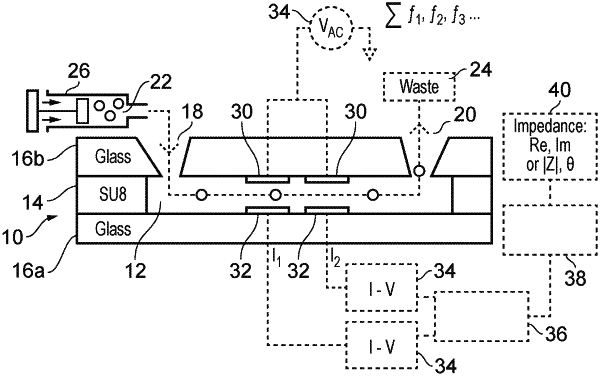| CPC G01N 15/12 (2013.01) [C12Q 1/18 (2013.01); G01N 15/0227 (2013.01); G01N 15/1023 (2024.01); G01N 15/1031 (2013.01); G01N 2015/0294 (2013.01); G01N 2015/1006 (2013.01); G01N 2015/1029 (2024.01); G01N 2015/103 (2024.01)] | 15 Claims |

|
1. A method of antimicrobial agent susceptibility testing comprising:
preparing samples of microorganisms suspended in an electrolyte, comprising a first sample of the microorganisms unexposed to antimicrobial agents and a second sample of the microorganisms exposed to an antimicrobial agent;
adding non-biological particles to each sample;
passing the first sample through an impedance flow cytometer to obtain a first impedance signal representing one or more components of impedance values of the unexposed microorganisms;
passing the second sample through the impedance flow cytometer to obtain a second impedance signal representing one or more components of impedance values of the microorganisms exposed to the antimicrobial agent;
comparing the first impedance signal and the second impedance signal; and
determining a susceptibility of the microorganisms to the antimicrobial agent based on any differences between the first impedance signal and second impedance signal.
|